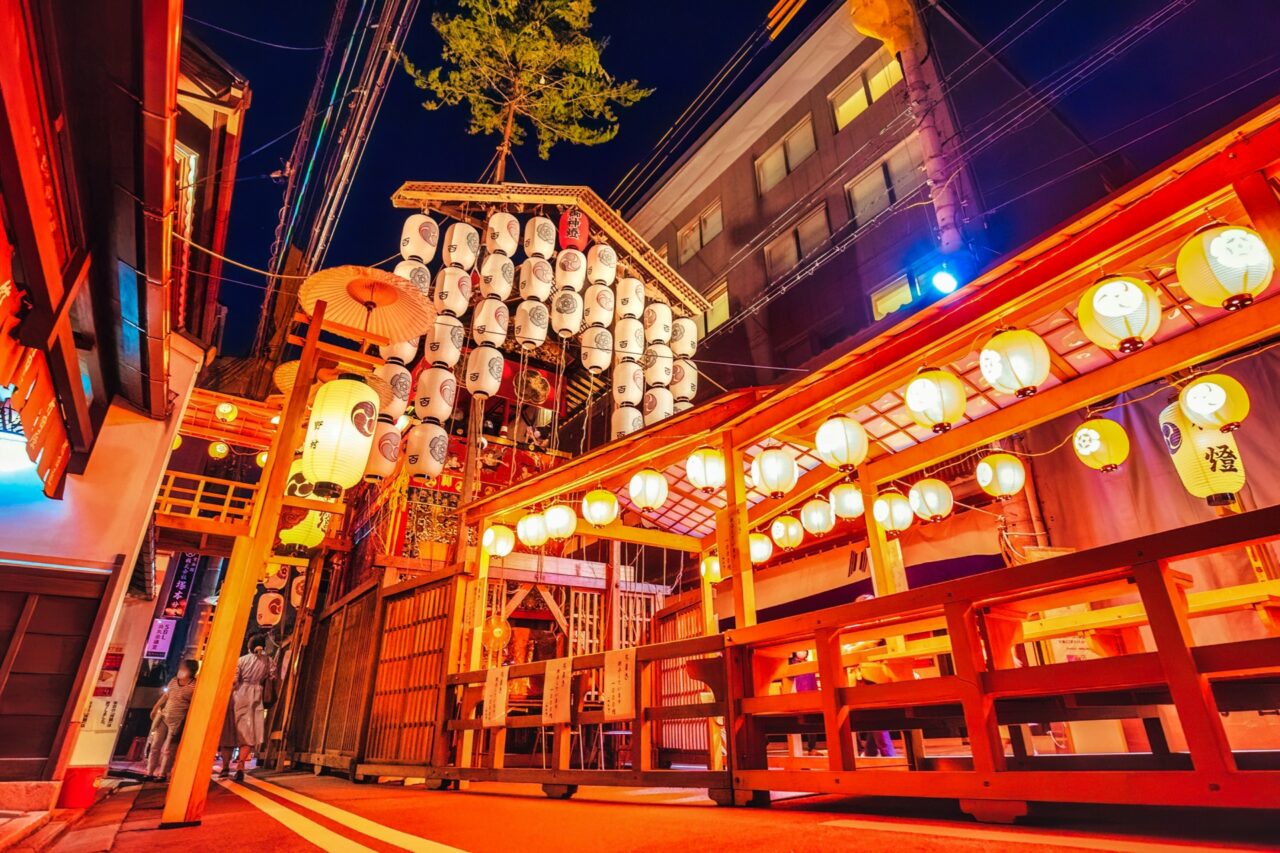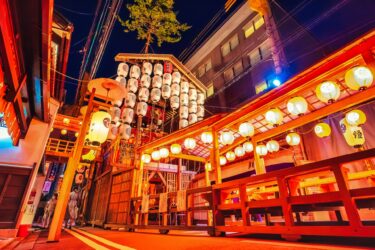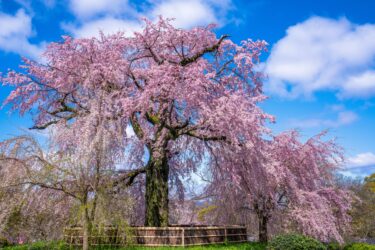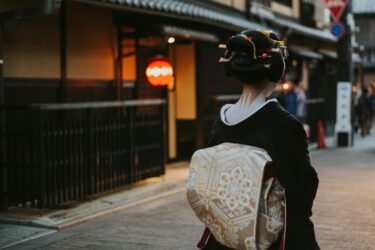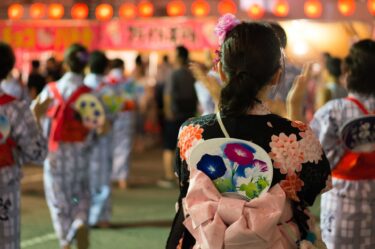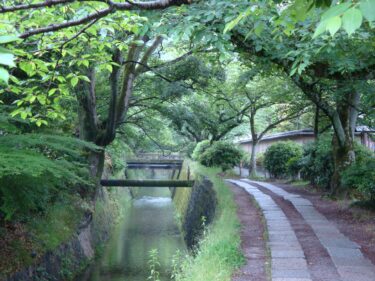If you’re visiting Kyoto in July, you’ll likely hear the sounds of traditional festival music, see lantern-lit floats winding through the streets, and maybe even notice a few more people in yukata (cotton summer kimono). That’s because July is the season for Gion Matsuri, Kyoto’s most famous festival and one of the biggest in Japan.
With a history going back more than 1,100 years, Gion Matsuri is a city-wide celebration that transforms Kyoto’s downtown streets with ancient, colorful parades, music, food, and local pride. If you’re visiting Kyoto in July, or thinking about it, this guide will walk you through the basics on Gion Matsuri, when and where to see the main events, and how to make the most of your visit.
What is Gion Matsuri?
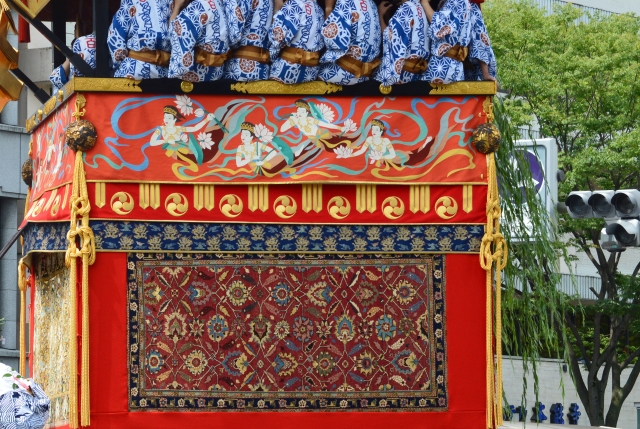
Gion Matsuri (Gion Festival) began in 869 as a religious ritual to stop the spread of a plague. Kyoto residents prayed to the gods at Yasaka Shrine and carried portable shrines through the streets to purify the city. Over the centuries, the event grew into an annual tradition involving enormous wooden floats, elaborate processions, and participation from many neighborhoods.
Today, Gion Matsuri is held throughout July and includes dozens of events, but it’s best known for its float parades and evening street festivals.
When and Where to See It
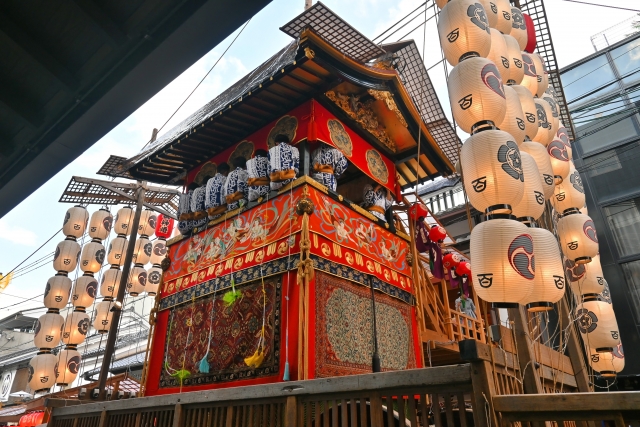
Gion Matsuri lasts the entire month of July, but the main events happen in the middle and end of the month. Here are the key dates to remember:
July 14–16: Yoiyama evenings before the first parade (during which lanterns are lit)
July 17: Saki Matsuri Float Parade (first main procession)
July 21–23: Yoiyama evenings before the second parade (with lanterns lit)
July 24: Ato Matsuri Float Parade (second main procession)
The festival takes place in central Kyoto, mostly around Shijo-dori, Karasuma-dori, and Kawaramachi-dori streets. Yasaka Shrine in the Gion district (pictured below) is the spiritual heart of the event.
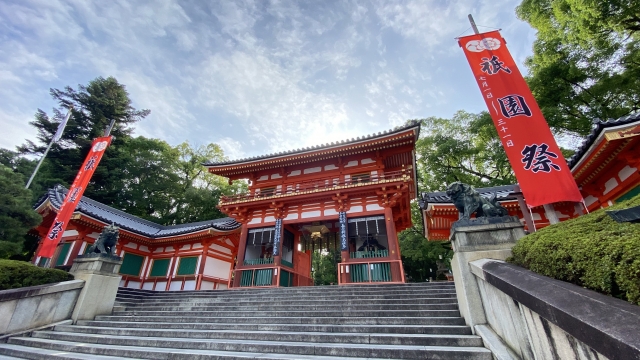
Gion Matsuri Highlights
Yamaboko Junko: The Float Parades
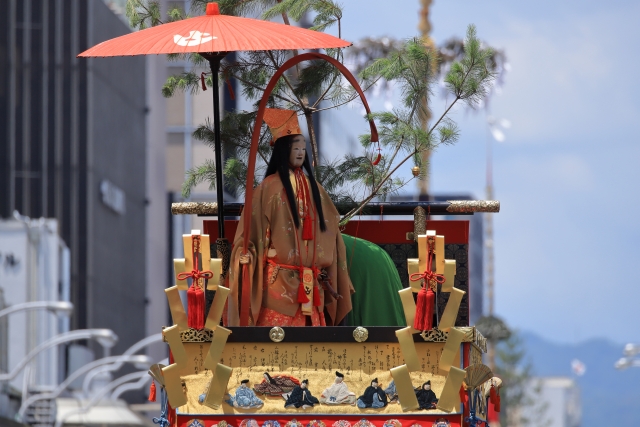
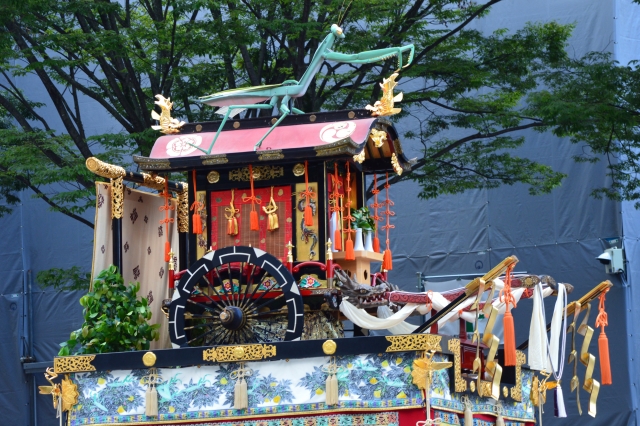
The most famous part of Gion Matsuri is the Yamaboko Junko, or float processions. These happen on July 17 and 24, each with different sets of floats.
The Saki Matsuri parade on July 17 is the bigger of the two, featuring around 23 massive floats. These floats are pulled through the city by teams of men in traditional outfits, accompanied by flutes, drums, and bells. Some floats are over 20 meters tall and weigh several tons. Watching them turn corners without any steering systems is one of the most exciting parts of the event.
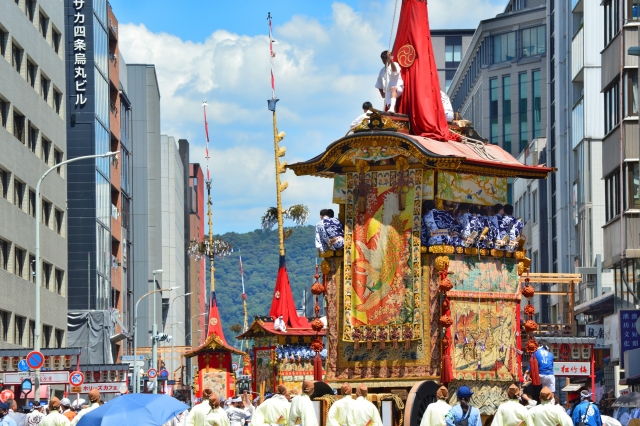
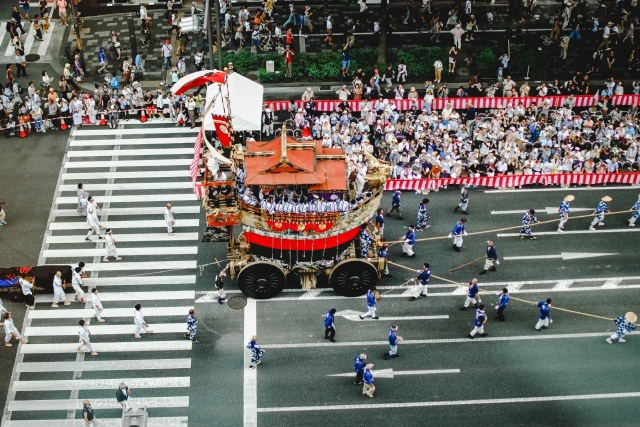
The Ato Matsuri on July 24 is smaller and less crowded, with about 10 floats. It has a calmer atmosphere that many visitors enjoy.
Yoiyama: The Pre-Parade Street Festivals
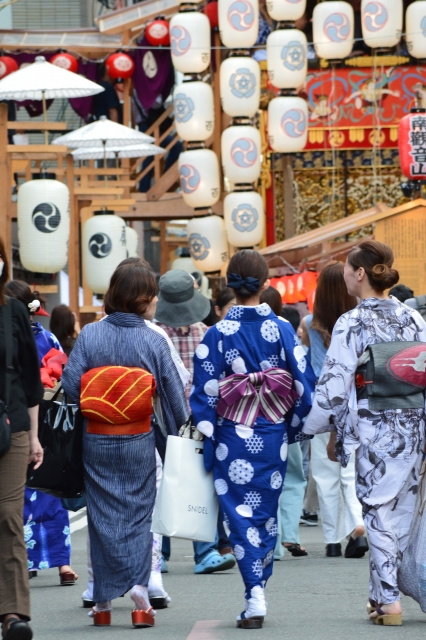
The evenings before the float parades—July 14–16 and 21–23—are called Yoiyama. During these nights, downtown streets are closed to traffic and filled with food stalls, glowing lanterns, and music. Many floats are on display and lit up for the evening, allowing you to walk around and see them up close.
Cultural Significance
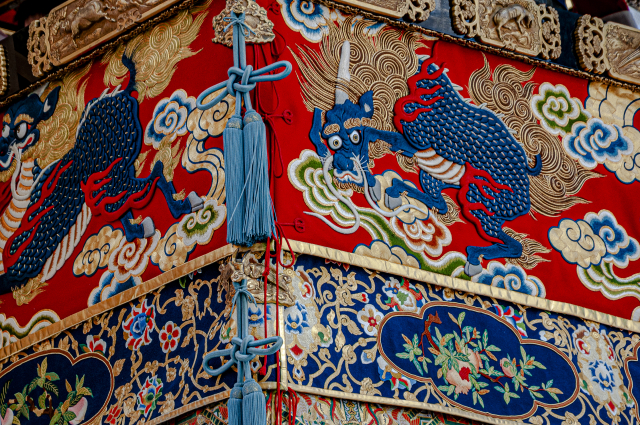
Gion Matsuri, of course, isn’t just a tourist attraction—it’s a living tradition for Kyoto residents. Each float is managed by a specific neighborhood group, and local volunteers spend all year preparing. The floats are decorated with lush textiles, wood carvings, and ornaments, some of which are hundreds of years old.
People of all ages take part in the festival, and wearing yukata (summer kimono) is also a popular tradition: you’ll see many locals and visitors dressed up for the occasion.
How to Enjoy Gion Matsuri as a Visitor
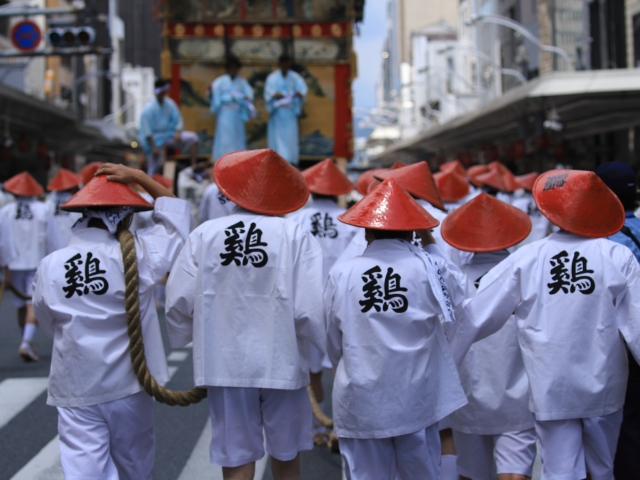
If you’re in Kyoto during July, there are many ways to experience the festival. Here are some tips:
Best Times to Go
Yoiyama nights (July 14–16 and 21–23) are perfect for walking around, eating, and soaking up the atmosphere.
July 17 is the best day to see the main float parade, but it can be crowded.
July 24 is less crowded and more relaxed if you prefer a quieter experience.
Where to Watch the Parades
The float parades pass through Shijo-dori, Kawaramachi-dori, and Oike-dori streets. Arrive early if you want a good spot along the sidewalks. Paid seating areas are also available along the route and can be reserved in advance. (See here for more information: Gion Matsuri Paid Viewing Seats)
Festival Food
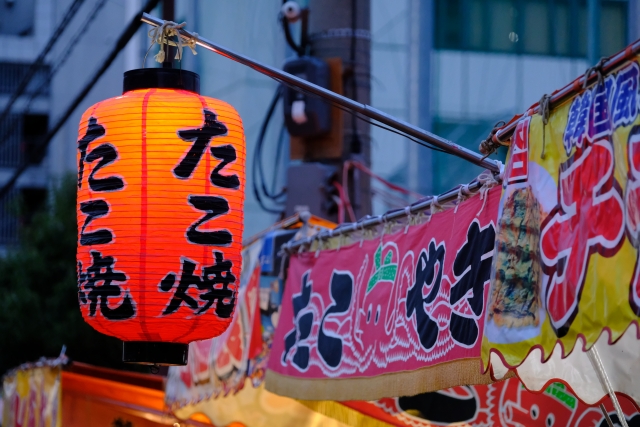
Like any Japanese festival, Gion Matsuri has no shortage of tasty street food, especially during the Yoiyama evenings. On these nights, yatai (food stalls) line the main streets, especially around Shijo-dori and Karasuma-dori streets, selling popular festival foods like takoyaki (octopus balls), yakitori (grilled chicken skewers), okonomiyaki (savory pancakes), kakigori (shaved ice with syrup), yakisoba (grilled noodles), candied fruits, and more. You may also find some stalls with little festival games, which are popular with children.
Need-to-Know Travel Tips for Gion Matsuri

For first-time visitors in particular, there are a few things you’ll want to keep in mind if you’re visiting during Gion Matsuri, even if you may not be attending festival events themselves.
Book accommodation early
Kyoto gets very busy in July. Hotels, hostels, and guesthouses often book out months in advance around the parade dates. If you plan to visit for Gion Matsuri, book as early as you can.
Use public transport & try to avoid rush peaks
Traffic restrictions during the festival can make driving or taxis difficult. The subway and trains are the best way to get in and out of festival areas. Closest stations to the main festival area include Shijo Station (Karasuma Line) and Kawaramachi Station (Hankyu Line). You should be aware, though, that these stations and the surrounding areas can become very crowded during peak events, like Yoiyama or the main processions, so you may want to plan to arrive a little earlier or later.
Stay cool and hydrated
Kyoto in July is extremely hot and humid. Wear light clothing, carry a fan (handheld electric fans have recently become popular with locals – you can find them at electronics stores or sometimes even drug stores in the city) or parasol, and bring water or sports drinks with you.
Mind the Crowds
Expect large crowds, especially on July 17, and be patient when moving through busy areas. If you don’t like crowds, the Ato Matsuri events on July 24 are a better option.
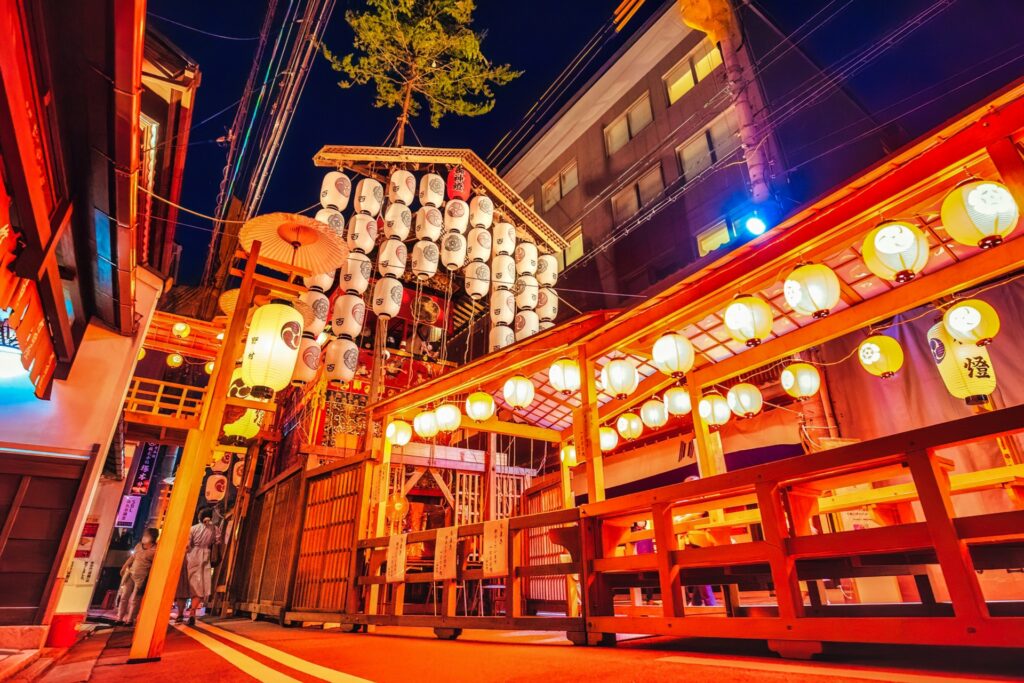
Gion Matsuri is much more than a summer festival—it’s a month-long celebration of Kyoto’s history, culture, and community. If you’re lucky enough to be in Kyoto in July, don’t miss the chance to be part of one of Japan’s greatest cultural traditions.

